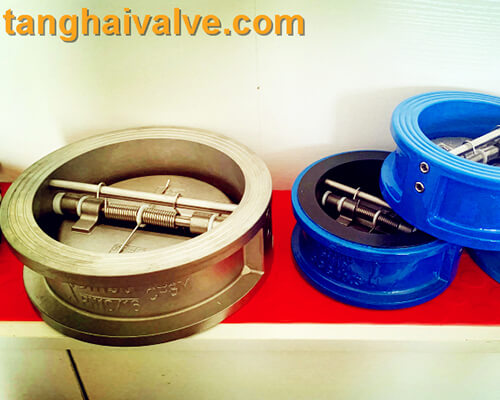Valve material comparison table-valve pressure-temperature
The relationship between valve temperature and pressure:
The valve operating temperature and pressure have a certain internal connection and influence each other. Among them, temperature is the dominant factor affecting the valve. A valve with a certain pressure is only suitable for a

ductile iron, DI, butterfly valve, manufacturer, center line, TH valve
certain temperature range, and changes in valve temperature can affect the valve’s operating pressure. E.g:
The nominal pressure of a carbon steel valve is 10MPa. When the medium working temperature is 200℃, its maximum working pressure P20 is 10MPa; when the medium working temperature is 400℃, its maximum working pressure P40 is 5.4MPa; when the medium works When the temperature is 450℃, the maximum working pressure P20 is 4.5MPa.
Valve material temperature and pressure comparison table:
Valve material and applicable pressure, temperature and grade
Gray cast iron is suitable for water, steam, air, gas, oil and other media with nominal pressure PN≤1.0MPa and temperature -10℃~200℃. Commonly used grades are: HT200, HT250, HT300, HT350.
Malleable cast iron Suitable for water, steam, air and oil media with nominal pressure PN≤2.5MPa and temperature -30~300℃. Commonly used grades are: KTH300-06, KTH330-08, KTH350-10.
Nodular cast iron is suitable for water, steam, air and oil with PN≤4.0MPa and temperature of -30~350℃. Commonly used grades are: QT400-15, QT450-10, QT500-7. At present, the level of domestic technology varies among factories, and it is often difficult for users to inspect. It is recommended that PN≤2.5MPa, and steel valves are used for safety.
Acid-resistant high-silica ductile iron Suitable for nominal pressure PN≤0.25MPa, suitable for corrosive media with temperature lower than 120℃.
Carbon steel is suitable for water, steam, air, hydrogen, ammonia, nitrogen and petroleum products with a nominal pressure of PN≤32.0MPa and a temperature of -30~425℃. Commonly used grades are WC1, WCB, ZG25, high-quality steel 20, 25, 30 and low-alloy structural steel 16Mn.
Copper alloy is suitable for water, sea water, oxygen, air, oil and other media with PN≤2.5MPa and steam media with temperature of -40~250℃. Commonly used grades are ZGnSn10Zn2 (tin bronze), H62, Hpb59-1 (brass) , QAZ19-2, QA19-4 (aluminum bronze).
High-temperature copper is suitable for steam and petroleum products with nominal pressure PN≤17.0MPA and temperature≤570℃. The specific selection must be in accordance with the valve pressure and temperature specifications. Commonly used grades are ZGCr5Mo, 1Cr5M0.ZG20CrMoV, ZG15Gr1Mo1V, 12CrMoV, WC6, WC9, etc.
Low-temperature steel is suitable for media with nominal pressure PN≤6.4Mpa and temperature≥-196℃ ethylene, propylene, liquid natural gas, liquid nitrogen, etc. Commonly used grades are ZG1Cr18Ni9, 0Cr18Ni9, 1Cr18Ni9Ti, ZG0Cr18Ni9
Stainless and acid-resistant steel Suitable for media such as nitric acid and acetic acid with nominal pressure PN≤6.4Mpa and temperature≤200℃. Commonly used grades are ZG0Cr18Ni9Ti, ZG0Cr18Ni10<nitric acid>, ZG0Cr18Ni12Mo2Ti, ZG1Cr18Ni12Mo2Ti<acid and urea>
TH Valve is a professional manufacturer of butterfly valve, gate valve, check valve, globe valve, knife gate valve, ball valve with API, JIS, DIN standard, used in Oil, Gas, Marine industry, Water supply and drainage, fire fighting, shipbuilding, water treatment and other systems, with Nominal Diameter of DN50 to DN1200, NBR/EPDM/VITON, Certificates & Approvals: DNV-GL, Lloyds, DNV, BV, API, ABS, CCS. Standards: EN 593, API609, API6D
Related news/knowledge:
What is the material of the main parts of the butterfly valve?-(1);
Valve body and material classification;
Comparison of bellows globe valve and ordinary globe valve;
What is the material of the butterfly valve stem?
Valve material and valve standards-(6)-gasket material




 © Copyright 2020 Tianjin Tanghaidongyang Valve Co., Ltd. All Rights Reserved.
© Copyright 2020 Tianjin Tanghaidongyang Valve Co., Ltd. All Rights Reserved.